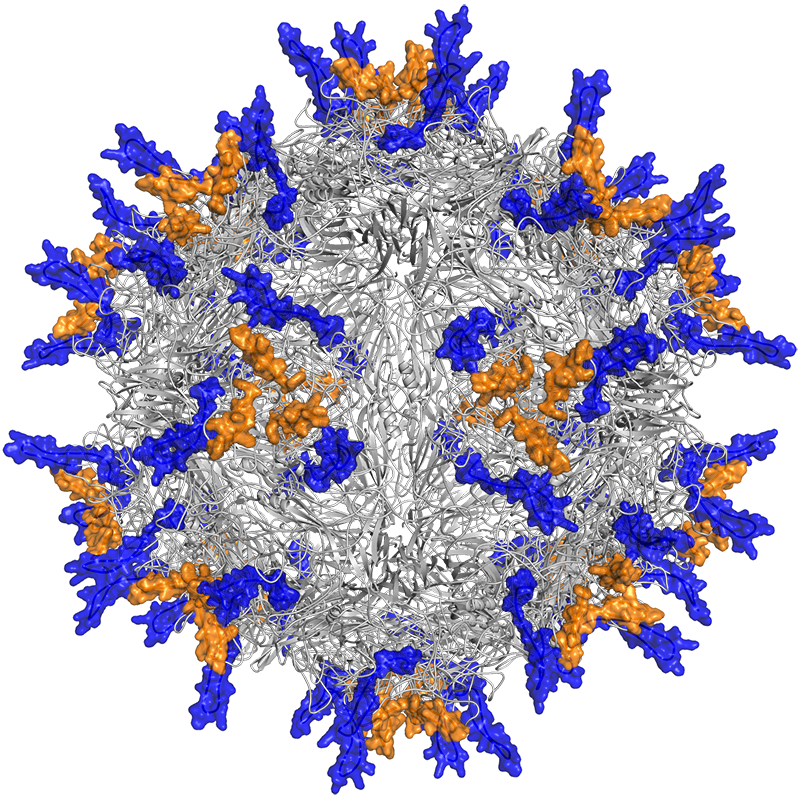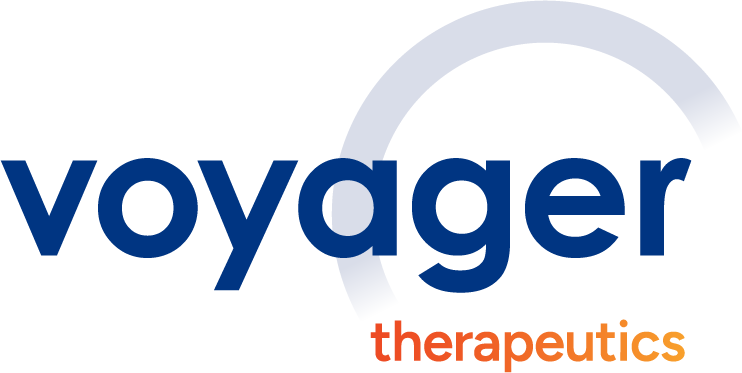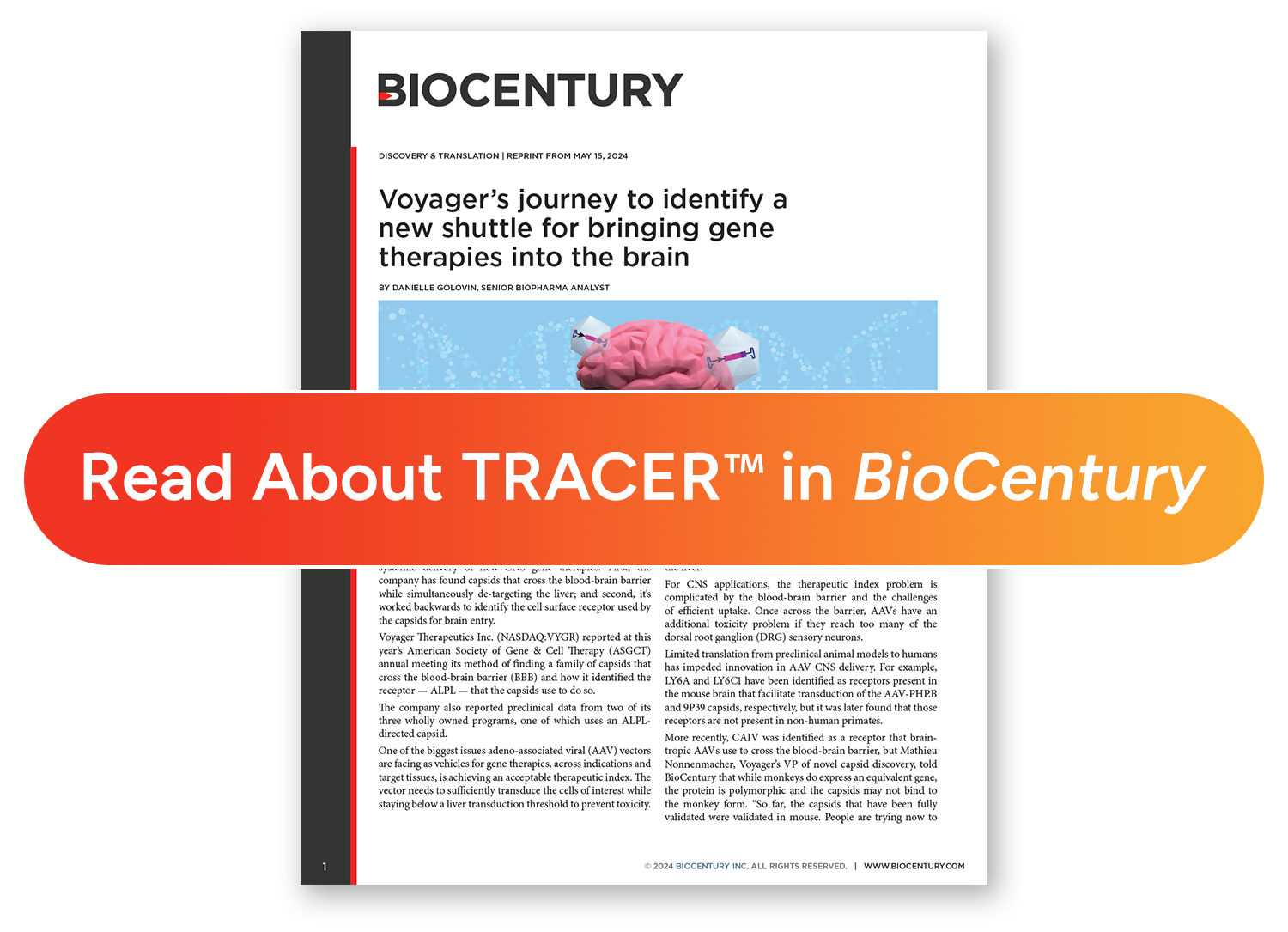TRACER Platform
The Problem
Delivery of medicines into the brain is hampered by the blood-brain barrier.
- Small molecules cross the BBB, but cannot effectively modulate many targets (considered “undruggable”)1
- Oligonucleotides require intrathecal injection, creating steep gradients in the CNS2
- Antibodies can cross into the brain but have a 0.1-0.5% brain to plasma ratio, requiring high doses3
- Gene Therapy: direct injection (Intra-Parenchymal, Intra-Cerebro Ventricular, Intra-Thecal, Intra-Cisterna Magna) can result in patchy delivery, inadequate brain distribution, low transduction efficiencies, and safety concerns4,5
References: 1) Mitiksh, et. al., Perspect Medicin Chem. 2014; 6: 11–24. 2) Mazur, et. al., JCI Insight. 2019 Oct 17; 4(20): e129240. 3) Tang, et.al., Drug Discovery Today. 2021; 26.8. 4) Bey, Mol Ther Meth Clin Dev, 2020. 5) Zincarelli et al., 2007.
The Solution
Voyager’s TRACER™ (Tropism Redirection of AAV by Cell-type-specific Expression of RNA) capsid discovery platform is a broadly applicable, RNA-based screening platform that enables rapid discovery of AAV capsids with robust penetration of the blood-brain barrier and enhanced central nervous system (CNS) tropism in multiple species, including non-human primates (NHPs).

The TRACER Difference
IV delivery:
minimally invasive
Multi-species validation:
multiple species of non-human primates and rodents
Receptor identified:
verified existence of human homolog; increases confidence in human translation
CNS penetration:
>100-fold improved delivery over AAV9 (ASGCT 2022)
CNS transduction:
up to 40% cells transduced in multiple brain regions at relatively low dose of 4e12 vg/kg in cynomolgus macaques (In Vivo Gene Editing and Gene Therapy Summit, 2023)
Liver de-targeting:
up to 30X improved liver de-targeting versus AAV9 in mice (ASGCT 2023)
Customizable cell tropisms:
can target neurons and/or glial cells
Relatively low doses:
50% cells transduced in multiple brain regions at 2E12 vg/kg in marmosets (ASGCT 2023)


